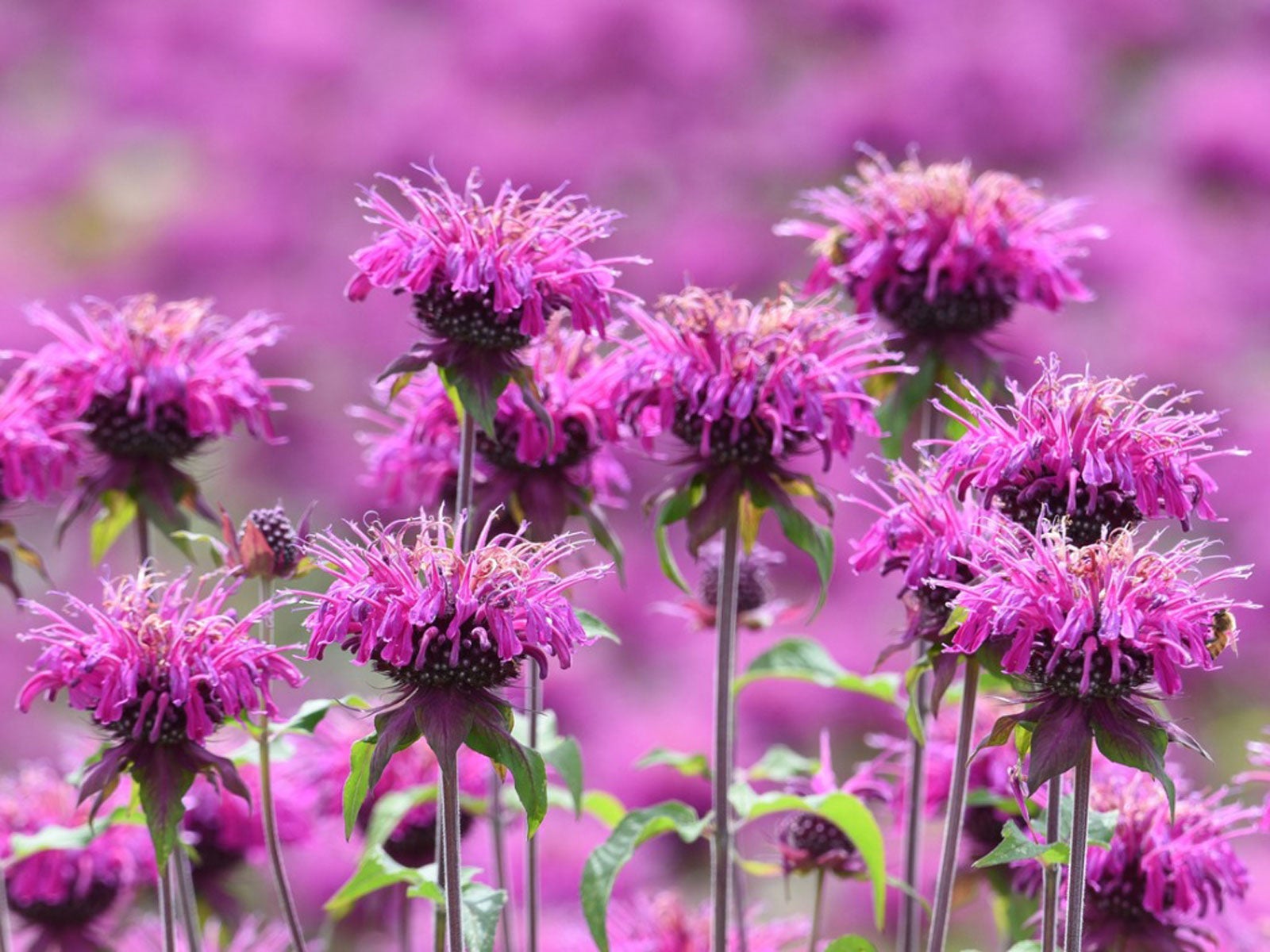Bee Balm Flower Plant - How To Plant Bee Balm And Bee Balm Care


Gardening Know How
The bee balm plant is a North American native that thrives in woodland areas. Also known as bergamot and by its botanical name Monarda, bee balm is attractive to bees, butterflies, and hummingbirds. The bee balm flower has an open, daisy-like shape, with tubular petals in shades of red, pink, purple, and white. Bee balm plants are perennial, coming back year after year to add cheerful color to your garden.
Monarda didyma and Monarda fistulosa are among the most common types available to growers. Many of these species continue to be improved for their use in the garden, with frequent introductions of new and exciting hybrid cultivars.
Quick Facts about Bee Balm
- Botanical name - Monarda
- Height - 24-48 inches (61-122 cm)
- Spread - 24-36 inches (61-91 cm)
- Sun exposure - Full Sun, Part Shade
- Soil requirements - Slightly Acidic
- Hardiness zones - USDA Zones 4-9
- When to plant - Spring, Fall
Uses for Bee Balm
Though many choose to grow bee balm flowers as an ornamental, they are also quite useful in herb beds and when planted near vegetable gardens. As their namesake would imply, bee balm serves as a vital resource to pollinators. These plants are often considered to be an invaluable asset to hummingbird gardens, as their nectar-rich blooms are an especially irresistible treat.
Bee balm leaves and flowers have long been used to treat a variety of ailments, purported to have the ability to soothe sore throats and upset stomachs. Most find that the dried plants taste similar to oregano, therefore making it useful in flavoring soups, salads, and other dishes.
How to Plant Bee Balm
Most varieties of the bee balm plant are between 2-1/2 feet and 4 feet (0.75–1 m) tall, but there are also dwarf varieties less than 10 inches (26 cm) high. Dwarf varieties are excellent for container gardens or up front in your flower border where you can appreciate the shaggy, tubular blooms of the bee balm flower.
Soil & Fertilizer
Those planting bee balm should situate the plants in well-prepared beds with good drainage. As a rich soil is imperative for the production of strong stems and healthy flowers, amendment with compost at planting time is common. In most instances, an annual application of a slow-release fertilizer is sufficient in managing the plant’s nutrient needs. A balanced fertilizer be applied in early spring, just before growth begins.
Water & Light Requirements
Bee balm plants will appreciate consistently moist soil throughout the growing season. Though the plant is able to withstand brief periods of drought, supplemental water may be needed in gardens that experience especially hot weather. As noted, growers should avoid planting monarda in poorly draining soils, as root and crown rot may be a concern. Bee balm plants will perform best in beds which receive full sun, or a minimum of six hours of light each day.
Sign up for the Gardening Know How newsletter today and receive a free copy of our e-book "How to Grow Delicious Tomatoes".
Basic Bee Balm Care
Once established, caring for bee balm is relatively straightforward. Monarda plants seldom need attention from growers beyond planting. Some species, which grow especially tall, may require additional support or trellising.
How to Prune & Deadhead Bee Balm
Pick bee balm flowers frequently to encourage flower production. Plants can be deadheaded throughout the season to prevent them from producing seeds, or to simply keep flower beds looking neat and tidy. Deadheading will also promote a new flush of blooms. This is most frequently done by the use of pruners or secateurs, making certain to carefully cut just above the nearest set of healthy leaves.
If you want a bushier plant, pinch off the stem tips as new growth appears in the early spring. In late fall, cut bee balm down to just a few inches (5 to 10 cm) tall. In cold areas, it may die completely to the ground during the winter but will reappear in the spring.
Problems, Pests, & Diseases
The bee balm plant is susceptible to powdery mildew, appearing as a gray, powdery dust on the buds and leaves in moist, cool weather. Fortunately, most instances of powdery mildew do not lead to the loss of plants.
If your bee balm plant develops mildew, you can treat it with natural remedies or a fungicide spray from the local garden center. Mildew may be prevented by planting bee balm where it will have good air circulation and avoiding watering from overhead. There are also new, mildew-resistant cultivars being developed.

Tonya Barnett has been gardening for 13 years. Flowers are her passion. She has transformed her backyard into a cut flower garden, which she regularly chronicles on her YouTube channel http://www.youtube.com/@tonyawiththeflowers.